Red Fox Coat Colour
Pelt colour is highly variable; essentially ranging from white (although most commonly yellow-red) to black. Some variation in fur colour can be attributed to habitat and, as well as smaller body size, Red foxes living in arid regions, such as in the Middle East and North Africa, tend to much paler coats than foxes from higher latitudes. Season can also have an effect and when the fox moults during the summer the longer guard hairs are lost, making the underside appear darker and the back lighter. Indeed, the colour of the fur comes from banding of pigment in the hairs. In An Irish Beast Book, James Fairley explains how fox guard hairs aren't a uniform colour: the tip 2mm or so is black, with a roughly 4mm band of red below that, and a 6mm band of yellow pigment below that; the remaining 10-15mm down to the root again being black.
The guard hairs on the belly and inner surfaces are white, while the underfur is grey. Fairley also mentions that entirely black guard hairs may be found to a greater or lesser extent through the 'red' (banded) ones and are occasionally found in such number on the underside to render the chest and belly charcoal-coloured. At the time of writing I (November 2016) have 169 reports, varying in credibility, of unusually-coloured foxes from the UK spanning 1955 to 2016—including 147 black, four cream/golden/pale and 15 white.
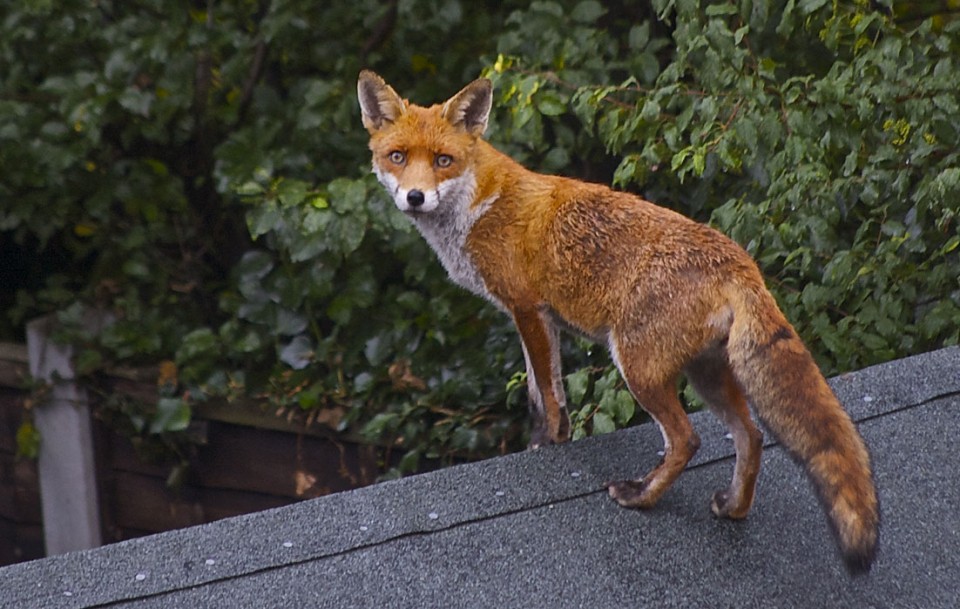
On their website, the Colorado-based Fur Commission mention 39 different colours and hues (I suspect there are more); most are the result of experimental breeding and thus exist only in captivity, but some populations (those living at high altitudes in Yellowstone, for example) exhibit some unique colouration. Occasionally some of these colour mutations are found in wild lowland populations, but it is unclear whether they arose naturally or represent animals that have escaped from fur farms. Some colour forms seem locally common and, on the Taimyr Peninsula of Siberia grey-breasted (“sivodushka”), blackish-brown (“chernoburaya”) and cross (“krestovka”) colour morphs appeared in 20-30% of the collected pelts.
Fox fur colouration is under genetic control and, although many of the specifics of how the colours are inherited are still uncertain, it does seem that there are at least two genes at work on different parts of the animal's chromosomes (see the QA on squirrel coat colour for an introduction). There are four main colour phases (or “morphs”) found in wild populations: Red; Silver; Cross; and White.
Red morph & "Cross foxes"
Red is the most common colour morph, although there are many hues, varying from reddish-yellow to very dark red/orange, with varying amounts of black interspersed. The coat colour comes from pigments called melanins that are deposited in the hair as it grows; the ratio of light (phaeomelanin) to dark (eumelanin) pigment and the order in which they're laid down in the hair determines the exact colour. Guard hairs have bands of black, yellowy-brown and white (no pigment) present at varying concentrations across the body, causing blended colouration. In his Wild Guide, Simon King notes that many of the red guard hairs have a red base, dark centre and a red (or occasionally creamy white) tip. Red foxes have varying amounts of black fur around their eyes, the side of the muzzle, on the back of their ears and on their lower legs (often called “socks”). A darker patch of hair near the base of the tail (over the supracaudal/violet scent gland - see Communication) is also evident in many individuals; this area lacks underfur, having only guard hairs with thick white ends and black tips.
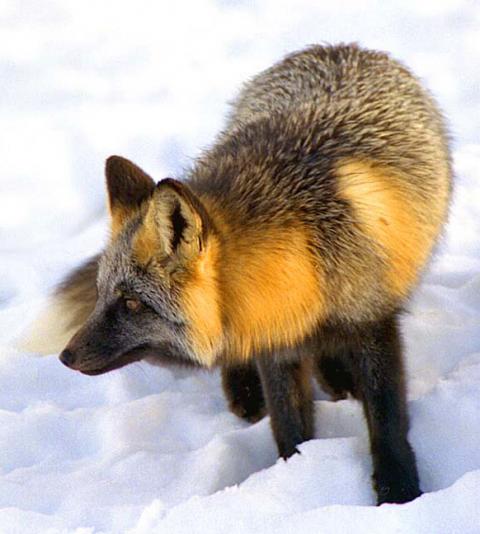
A white “bib” that extends up to cover the bottom jaw and lower half of the muzzle is common, while the lips and nose are generally brown. The fur on the belly ranges from white to slate grey and the tail is often less colourful than the body. There are occasional reports of “black-bellied” foxes—which have dark red backs and dark grey/black sides and belly—and, writing in 1954, Tarvo Oksala found that 18 (0.6%) of the 3,000 Finnish fox skins he examined were of this type. There are no equivalent data from Britain but, in his 1968 book Wild Fox, Roger Burrows mentioned that black-bellied animals have occasionally been caught by hunts here, including in Hampshire, Gloucestershire and Shropshire.
Cross foxes are very similar to the normal Red morph, but have a dark brown or black line that runs along the back to the base of the tail and a second line running across the shoulders and down the legs; this forms a cross pattern at the shoulder. Cross foxes are found throughout Europe (recall the subspecies crucigera, or “cross-bearer”, described from Germany) and common in North America, presumably testifying to the spread of foxes introduced from Europe by early settlers. The bulk of foxes (about 60%) fall into the Red colour morph, with Cross foxes accounting for about 25%.
Melanistic morph & "Silver foxes"
The degree of melanism is greatest in the Silver foxes; this is the earliest documented wild Red fox colour morph. The coat is black, with varying degrees of white “frosting” that comes from banding of the guard hairs; eumelanin is deposited in the body of the hair and causes it to appear black, while phaeomelanin is deposited further up, giving a paler tip. The degree of silvering is highly variable as phaeomelanin deposition varies across the body and between individuals; some foxes will be jet black, while others can appear slate grey. There are several mutations of the silver morph, one of which (the Alaskan silver) has a browner tint to its coat. Melanism is more common in cold climates (often being highly localized), so silver foxes are more common in northern regions, particularly in the forest zones and forest-tundra belts of middle and eastern Siberia (it's rare in desert and steppe populations). Overall, silver foxes account for about 10% of colour morphs.

Black (melanistic) foxes are occasionally seen in the UK; being genetic variants, they crop up from time-to-time with Red cubs in litters, and there may be an increasing introgression of North American Red fox genes from escaped domestic animals resulting in an increase in dark animals. Jet black foxes are, however, very rare in Europe; in his 2005 Carnivores of the World, Ronald Nowak notes that such foxes are confined to the extreme north of Europe and make up about 1% of the population. In September 2008 a young black fox was filmed in a cemetery on the outskirts of Chorley in Lancashire (north-west England) and the BBC's Springwatch team filmed a black fox in a garden in southern England in early June 2010.
A blog post by the BBC following the Springwatch series generated, by my count, 129 unconfirmed reports of black foxes from almost every county of England, as well as a couple of reports from Scotland (including Edinburgh), Wales (particularly Snowdonia) and Republic of Ireland (County Louth). Most foxes (95 of the records) were, based on the dates given or the general wording of the posts, seen during 2010. There were, however, some much earlier records, including a report of a black or very dark grey fox on a farm in “deepest Sussex” in 1955; another from a lady who watched a black fox carrying a rabbit at Corfe Mullin in Dorset during 1980; and a record of a black fox seen in Twyford, Leicestershire in 1989.
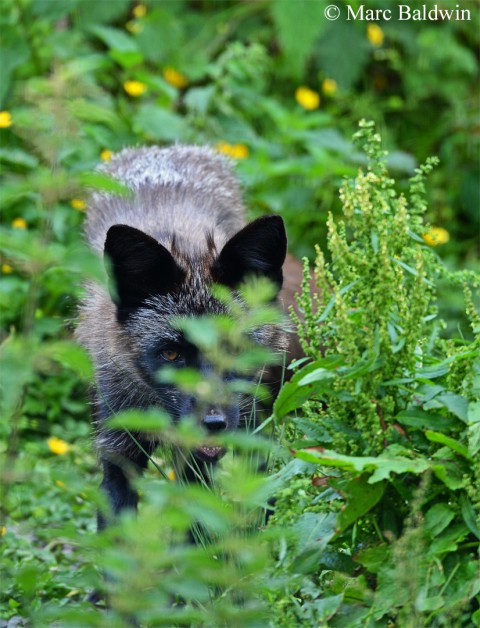
I have also received several e-mails from readers who have seen black foxes, including an animal spotted in Llanelli, Wales during May 2010; a report of an adult fox with three cubs—one red and two black—in Abingdon, Oxford during June 2011; and an adult black dog fox photographed by John Moore in a field in the Cambridgeshire village of Bassingbourn on 26th March 2012. Interestingly, looking at the photos that John sent to ITV News, the animal has the long, fine coat typically associated with North American animals and particularly typical of fur farm foxes—it made me wonder whether this animal was an escaped pet. Unfortunately, the animal was killed by a car three days later on a road in Bassingbourn but, instead of burying it in his garden as originally planned, John handed the body over to Helen McRobie and Angela Wheatley at the Anglia Ruskin University. McRobie, who has done a great deal of work on melanism in squirrels, told the BBC that their genetic analysis revealed two new mutations that had never been described in scientific literature, and that parts of the fox's genetic code were a very close match to a raccoon dog (frequently farmed with silver foxes in Russia), suggesting that this individual was an escaped pet.
Neil Broome posted on the Springwatch Facebook group that he'd seen a black fox in the middle of a snow-dusted road near Cuminestown in Scotland during December 2013, while a lady posted to say she'd seen a black fox while walking her dog along a disused road in Hertfordshire in June 2014. More recently, Robert Burn and Robert Fuller appeared in the Daily Mail after filming and photographing (respectively) a black fox playing with a red morph in his West Yorkshire garden in July 2015, while a reader from Leicestershire contacted me to say he'd seen a black fox while out walking his dog in a local forest during September 2015. In 2016 a black fox was photographed with a normally-coloured individual in a garden in west London and there were sightings in Essex, Halifax and Waterlooville in Hampshire. In April 2017 a black fox was sighted in Winchester and another was photographed sunbathing on a garden wall in Halifax, West Yorkshire.
Hayley de Ronde, owner of Black Foxes UK, informs me that the bulk of black fox reports are from the London and Halifax area and most appear to be North American-British hybrids, a result of escapes and/or releases from fur farms during World War II. Halifax, it appears, had the first hybrid population before London and Hayley suspects it's close to 10% occurrence. As of the end of March 2019, I have 152 records of melanistic foxes from the UK stretching back to 1955 and they seem the most common colour aberration reported, accounting for almost 81% of my database.
Work on farmed foxes has revealed that the degree of melanism is related to temperament. The late geneticist Clyde Keeler demonstrated that, because melanin and adrenalin are generated via the same hormone “pathway”, black foxes tended to have higher adrenalin levels and be less fearful than lighter coloured animals. Indeed, in a 1970 paper to the Journal of Heredity, Keeler and his colleagues described pure-bred Red foxes as “a bundle of jangled nerves”. There is also some indication that silver and red morphs may have some physiological differences; working in Poland, Wlodzimierz Nowicki found that farmed Silver foxes had smaller arteries in their cardiac circulation than wild Red foxes, although it is unclear whether this has arisen during the selective breeding process.
White morphs & Albino foxes
Very occasionally white foxes are reported from the wild; both albino and non-albino animals have been documented. In their Mammals of the Soviet Union, Vladimir Heptner and Nikolai Naoumov noted that white (or “de-pigmented” as Heptner and Naoumov called them) foxes are rare and that such animals most often appeared in the southern forest zone of the region. Interestingly, Heptner and Naoumov also mentioned that albinism usually develops in foxes after years of insufficient food, although it's difficult to see why this should be so, given the genetic basis for the condition.

In his 1968 book Town Fox, Country Fox, Brian Vezey-Fitzgerald notes that white individuals have been reported from Britain, the majority from Devon; that said, he notes that five were apparently caught at Whaddon Chase in north Buckinghamshire, although some maintain that these were “cream” rather than white animals. In his 1896 A Handbook of British Mammals, Richard Lydekker mentions a white fox that was killed in west Somerset by the Taunton Vale Hounds in 1887, while Colonel Talbot, in his 1906 Foxes at Home, describes a white fox caught in Wentworth, Surrey during the late 1800s. Similarly, in his 1906 book, The Fox, Thomas Dale refers to a white fox seen in Roborough Woods, Devon during 1898, another in Essex and two in Somerset.
In a brief note to Imprint, the journal of the Doncaster Museum and Art Gallery, during 1985, Colin Howes reviewed the hunting literature for cases of white foxes in Yorkshire. Mr Howes found that a white fox was taken by the Cleveland Hounds in Eston on the North Yorkshire coast during the late 1800s, while “a very white fox” was apparently flushed by the Bramham Moor Hunt on a couple of occasions in the Hutton Thornes area, just west of York. Finally, Howes notes that a “totally white” fox was killed at Hawthorne Bank, near Aldwark north-west of York during 1863.
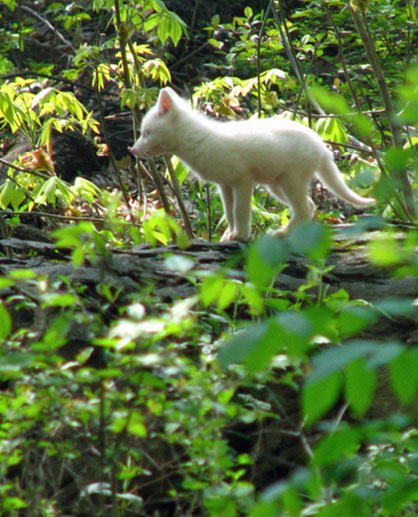
Elsewhere in the literature, there is a note in Henry Tegner's novel The White Foxes of Gorfenletch of an account of a number of white foxes in the countryside below the Cheviot Hills that appeared in the 1949 issue of “the Journal of the Zoological Society of Scotland” (RZSS). This is actually a reference to a short article by Tegner in Scottish Zoo and Wildlife, a magazine published by the RZSS. In the article, Tegner mentioned a white fox killed by the Percy hounds in the grounds of Brinkburn Priory, Northumberland, during 1937 and, in the spring of the same year, that a gamekeeper dug out a white vixen and her two normal colour cubs on a nearby estate and sent them to the Zoological Society of Scotland, where they unfortunately died soon afterwards. Hounds caught and killed a pure white fox in east Northumberland in November 1938 and Tegner noted:
“The tips of the ears and brush were black. The eyes were yellowish and lighter than the eyes of a normal fox. There was none of the pink coloration one associates with the true Albino.”
The claws were apparently dark like those of a normally-coloured fox. Tegner goes on to describe another white fox spotted in the same area in 1938 and two subsequent individuals; one caught in a rabbit trap in 1944 and the other seen by a local estate owner in 1947. It seems that a widely-held theory at the time was that this rash of white foxes in the Coquet valley was courtesy of a silver dog fox that escaped from a local farm in the spring of 1937, but Tegner was more pragmatic:
“What is more probable is that there is a definite strain of albinism extant in this neighbourhood, which keeps on breaking out from time to time. A dog fox of some sort, not by any means necessarily white, may have covered more than one vixen during a season to produce these scattered white litters.”
This is an interesting suggestion from Tegner because, at the time, there was a very widely-held belief that foxes were strictly monogamous (see: Mating and Monogamy).
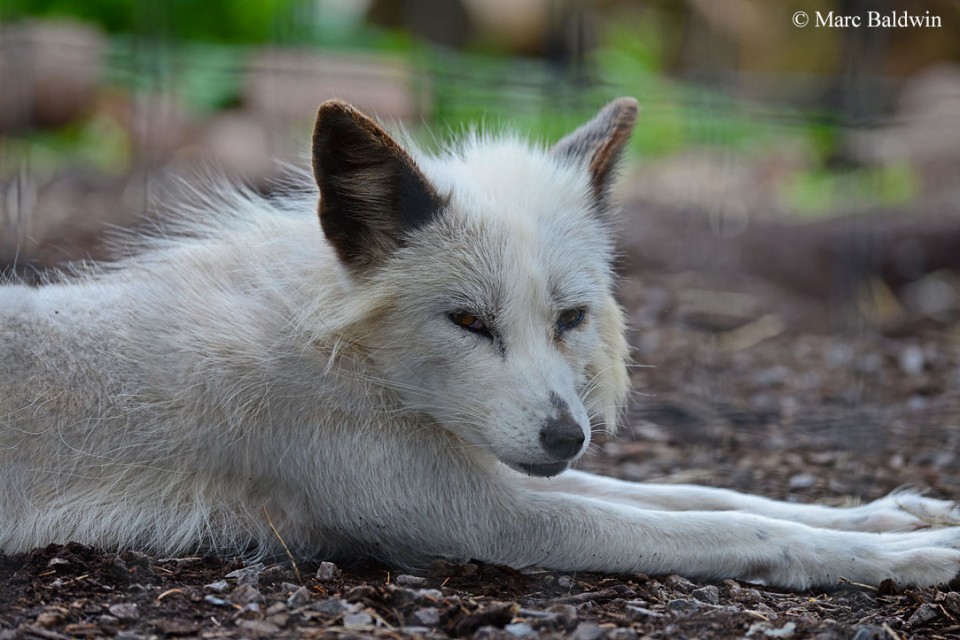
More recently, in April 2006, a white fox was seen several times on National Trust land in Thurstaston on the Wirral Peninsula and another reported from Kensington, London during November 2009. One was seen in an urban area of Derby in November 2010, and one reported by a farmer out lamping in Lincolnshire during late October 2011. Two white, non-albino, foxes were shot in on a farm in Kent during November 2011, while, in May 2012, a white fox was photographed on a farm in Bethersden, Kent and in November of the same year there was an unconfirmed report of a white fox on an industrial estate in Bournemouth (Dorset, UK). In January 2014 a white fox was seen crossing farmland in Outwood, Surrey on two separate occasions; a photograph taken by the land owner was sent to me by Mike Johnson, a naturalist in the village, and, despite the low resolution, clearly shows the animal to be a fox. Mike informed me that a local gundog trainer filmed a white fox on his mobile phone not far from Outwood in October 2014, although the suggestion is that this wasn't the same animal. Unfortunately, no further sightings have been reported of these foxes.
In April 2015, what appeared to be a white fox was captured (briefly and at distance) by a dashboard camera by a driver on an industrial estate in Poole, Dorset. Two white fox cubs were photographed by Holly Hadfield in her garden in Brixton, London during June 2015. (According to the Daily Mail article in which the photos appeared, the foxes were albino, but this is not certain from the images.) A silvery-white fox was photographed outside the offices of The Caterham and District Independent newspaper in Caterham, Surrey on 10th March 2016—the animal had a vaguely North American appearance, which suggested it may have been an escaped/released pet. There was also apparently a “leucistic fox” killed in North Wexford in Ireland in 2016, but going by the photo this was actually closer to being piebald and looked very much like an escaped/released pet. Later that same year, a white fox was caught on carnivore biologist Adele Brand's trailcam in Sussex. More recently, two white foxes were filmed by a man in Islington in London during 2019 and the most recent report I'm aware of was a cub videoed at an earth in Cornwall in May 2020. Generally speaking, white foxes are exceptionally rare in Britain and I'm only aware of 18 sightings, making up about 10% of my database.
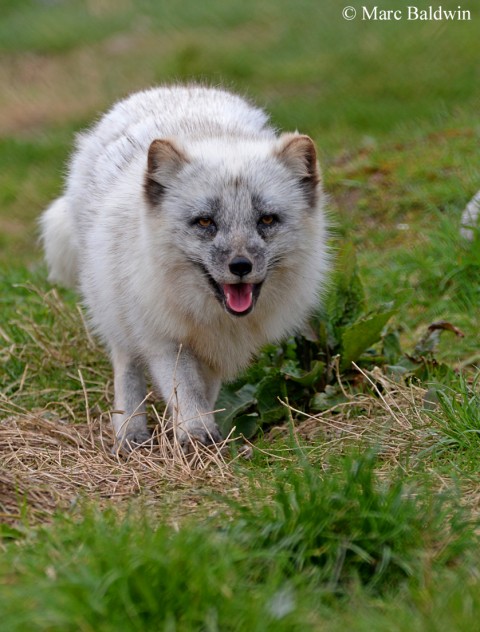
It is worth noting that not all cases of white foxes recorded from Britain were Red foxes. Dale mentions a white fox seen in Kincardineshire, on the coast of north-east Scotland, which was believed to have come ashore from the wreck of a Norwegian vessel and was probably an Arctic fox (Vulpes lagopus). Similarly, in 1984, Don Jeffries at the Nature Conservancy Council and Institute for Terrestrial Ecology biologist Robert Stebbings published a short paper in the Proceedings of the Dorset Natural History and Archaeological Society about a “strange light-coloured fox” spotted in Dorset, south-west England. The animal was seen on several occasions on a farm near Poole during April 1983, before it was found (recently) dead in a field about 1km (just over half-a-mile) away, on 16th April. The body was handed to the authors for identification and autopsy and turned out to be a young female Arctic fox that had died from internal bleeding, apparently caused by a blow to the chest. The authors point out that this animal obviously did not arrive from the Arctic under its own steam and so had presumably escaped (or was illegally released) from a private collection or zoo.
[One question often asked when people see white or black foxes is how common these colour morphs are in the UK. The short answer, for both colours, is that nobody really knows, particularly given that white foxes may or may not be albino. I have already mentioned that some authors have suggested, across Europe as a whole, jet black foxes make up no more than 1% of the population, and I would be surprised if it was any more than this in the UK. The likelihood of an albino being born is lower because it is both recessive and the gene (or genes, given that we know 100+ genes can affect albinism in mice) that codes for the condition is itself very rare. I have seen figures of 1 in 100,000 (i.e., 0.001% of the population) squirrels is albino, but we know that in other animals—humans, for example—there can be much greater variability, with the chance of a child in Minnesota being born albino apparently being about 1 in 1,200, equating to about 0.08% of the population.]
Unusual Coats

In most cases, foxes fall into one of the aforementioned colour morphs, but some may exhibit combinations of colour patterns or hues. Red colouration with large white patches on the head and body (i.e., piebald), for example, is well documented, as are white (rather than the usual black) “socks”. Vezey-Fitzgerald mentioned a piebald fox that was killed by the Taunton Vale Hunt in Somerset during the 1880s and, more recently, a lady e-mailed me to describe a brindle-coloured fox she saw while out walking her dogs near Southampton in April 2011; she described it as having “vertical stripes the whole length of the body, fairly wide apart, black on very dark 'yellow'”.
Similarly interesting patterns have been reported from North American foxes, including a fox run-over near Yellowstone's Tower Junction during 1998 that was largely (about 60%) black, with patches of red. “Golden foxes” are also reported from time-to-time; these have a yellow/blonde coat, similar in hue to Golden Labrador dogs. The golden colouration is often present only in the cub/subadult, and the animal moults into a normal coat during the autumn—such cases are likely to be examples of “fever coat”, where an illness in the mother during pregnancy impairs melanin deposition in the fur of the foetuses. A family of golden foxes were reported from Stoborough Heath, near Arne in Dorset (UK) during May 2011 and again in the summer of 2012. A four-week old male cub with very light blonde (bordering on white) fur was found in Flackwell Heath near High Wycombe in Buckinghamshire at the end of April 2011 and was taken to St Tiggywinkles wildlife hospital. More recently, in July 2020, a reader contacted me with a video of a young golden/blonde fox visiting her garden in London.
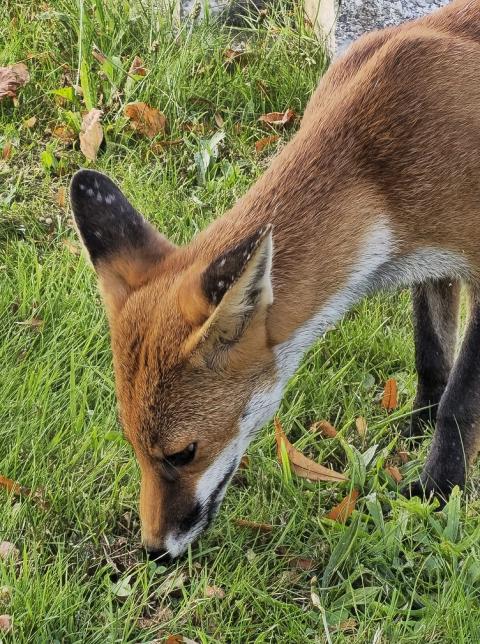
There are occasional examples, from both captivity and in the wild, of foxes displaying leukotricia, which manifests as while flecks in an otherwise normal coat (giving the impression the fox has been splattered with white paint or caught in a light snow storm), and vitiligo, where patches of fur may temporarily lose their pigmentation. Indeed, along similar lines as vitiligo, foxes sometimes present with white spotting sometimes referred to as “fawn spots”. These pale blotches can occur anywhere in the underfur, although tend to be most often reported on the ears and legs where the fur is shorter and darkest. Some early authors suggested that the white spots were tick bites, but, although the genetics have yet to be confirmed, we now think this is an inherited condition unique to European red foxes. Naturalist Onyx Stewart has collected records of spotted coats for many years and tells me that it seems particularly common in some localised populations, such as Eastbourne in Sussex (UK) and the South Limburg region of the Netherlands.
A final note on the variation in coat appearance should include aberrations. In rare cases, a fox may lack some or all of the guard hairs and possess underfur that is tightly curled, giving a “woolly” appearance; these animals are Samson foxes. It should be noted that Samson isn't a species of fox; it is a genetic condition affecting several different fox species, including Red, Arctic and Grey foxes. Samson foxes are well known from fur farms (where their pelt is almost valueless) and have occasionally been recovered from the wild. Early naturalists considered that the Samson condition was caused by a parasite or poor diet, but breeding studies by Finnish biologist Tarvo Oksala during the late 1940s and early 1950s suggested that it is an unstable recessive genetic trait, meaning that it can be inherited, but normal foxes may moult into Samsons and vice versa.
According to several authors, Samson foxes are larger than normal foxes and tend to live around human settlements where they feed largely on rubbish; they also carry more fat, have faster metabolisms and shorter claws than normally-furred animals. I am not aware of any Samson foxes having been seen in the UK, but wild individuals have been shot in parts of northern Europe, including Finland, Sweden and Norway as well as in the USA. (For more details, please see the QA: What are Samson foxes?) Occasionally, completely hairless animals are spotted. Some diseases (mange, malnutrition and hypotrichosis, for example) can cause hair loss, but in these cases it seems that the hair follicles are missing from the skin; these are alopecic foxes.